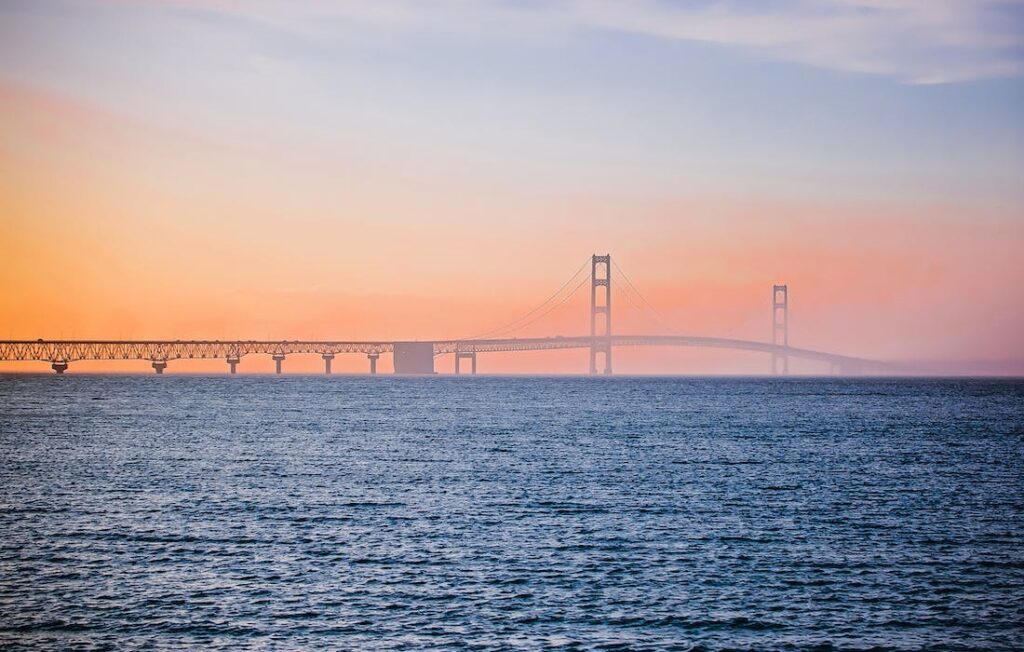The Great Lakes. Five massive lakes along the border of the United States and Canada that make up 20% of the world’s surface freshwater. They flaunt more than 10,000 miles of shoreline and are home to 3,500 native species of plants and wildlife—some of which are completely unique to the Great Lakes Basin region. Bald eagles, gray wolves, moose, river otters, beaver, Canada lynx, walleye, yellow perch,—the Great Lakes provide space and resources for some of the world’s most well-known species (and many that are not) to live and prosper.
For those of us who grew up here, we were taught to remember the lakes like this: “H.O.M.E.S” – Lake Huron, Lake Ontario, Lake Michigan, Lake Erie, and Lake Superior.
The meaning of this acronym is not lost on any of us. These five lakes dramatically influence the places we call home, from the water we drink to how we live our lives. For the communities, states, and provinces that border them, the lakes impact our weather, our economies, our livelihoods, and our cultures.
As you can imagine, the health of the Great Lakes is immensely important to the wellness of the 40 million+ people who live in the surrounding areas. But their influence doesn’t stop there—not by a long shot.
This is how the health of the Great Lakes affects us all.
A Brief History
Indigenous tribes have lived in the Great Lakes Basin for tens of thousands of years. The Ojibwe, Odawa, and Iroquois (a collective under which many separate tribes form a nation) are among the better-known native communities but dozens more have shared this space for millennia.
To this day, they use the lakes as a source of freshwater, food, and transportation, but it wasn’t until European colonizers and settlers entered the region in the 1600s seeking farmland, furs, and other natural resources that would bring wealth, that the Great Lakes region began to see a significant environmental impact.
Today, humans rely on the Great Lakes for water, food, transportation, irrigation, jobs, recreation, and much more.
The Current State of the Great Lakes
Sewage disposal, toxic heavy metal contamination, pollution and runoff from industry, agriculture, and urban environments—the Great Lakes have suffered significantly over the past two centuries with the growth of industry and urbanization in the region. The result? The 2022 State of the Great Lakes report, o notes that significant work must still be done to reverse and prevent further harm to the lakes.
Today, the largest challenges facing the lakes include (but are not limited to):
- Invasive species. Dozens of non-native species, such as Invasive carp, compete with native fish, wildlife, and plants. Invasive species arrive in the Great Lakes by swimming through channels connecting the Great Lakes to other large bodies of water, such as the Mississippi River. They can also be transported to the lakes via ocean-going ships.
- Nutrient oversaturation and harmful algal blooms. An oversaturation of nutrients in the soil due to land use changes, fertilizers, manure and pesticides, invasive species, and climate change has led to an overgrowth of harmful algae in the Lakes that release toxins harmful to the native flora and fauna as well as water quality and pose a threat to human health.
- Industrial harm. Pollution from industries bordering the lakes and mining efforts throughout the Great Lakes region contaminate streams and groundwater that feed directly into our lakes. Toxic chemicals from runoff, untreated sewage, and more can remain in the waters for decades.
- Climate change. Warming temperatures and changes in precipitation and weather influence water levels, shore erosion, freezing and thawing patterns, and wildlife behavior—all of which determine how healthy (or not) the Great Lakes are and impact coastal communities.
- Plastic Pollution. Plastic pollution poses a serious threat to the environment and could pose a threat to public health. It’s estimated that we each ingest about a credit card-sized amount of plastic each week. The building blocks of plastics are, themselves, toxic. Plus, once in the water, plastic fragments absorb toxic chemicals and can harbor potentially dangerous microbes.
What We Need to Address
Knowing the biggest problems, how can we begin to address and resolve these issues? Where do we start? Thankfully, the Alliance for the Great Lakes, a nonpartisan nonprofit and EarthShare Nonprofit Partner working throughout the Great Lakes Basin region to help protect Great Lakes habitats and clean waters, has come up with the following list of high-priority areas to begin:
Water Infrastructure
“Increase water infrastructure funding, prioritize funding for communities most in need.”
The United States at large has failing water infrastructure, and this is especially prevalent in the Great Lakes region. The Flint, Michigan water crisis is an unfortunate example of this. Leaks, lead pipes, and sewage overflows are only a few examples of things that must be addressed—and quickly. It will be critical that this work begins in communities that have the highest need—those who are already experiencing poor water quality.
Agriculture
“Pass a Farm Bill that prioritizes clean water.”
Agriculture is the largest source of water pollution and contamination in the Great Lakes region, largely from runoff that dumps fertilizers, pesticides and other toxic chemicals into the lakes. These chemicals disturb the native plant and animal life, affect the water’s drinkability, and can make the lakes inaccessible for recreation due to harmful algal blooms that are toxic and put human health at risk. The federal Farm Bill, along with other agriculture reform legislation, should ensure that farms produce clean—not contaminated—water from their processes.
Plastic Pollution
“Pass legislation to stop plastic pollution.”
Humans and corporations are producing, consuming, and throwing away far too much plastic. Research has found that approximately 22 million pounds of plastic enter the Great Lakes every single year. Congress can make plastic producers responsible for their products through those products’ entire lifecycles; a principle called “extended producer responsibility.” This would take the burden of plastic pollution and cleanup from local communities who may not have the capacity or financial resources to combat the negative effects of this pollution.
Great Lakes Restoration Initiative
“Fully Fund the Great Lakes Restoration Initiative.”
The Great Lakes Restoration Initiative (GLRI) is a federally funded program that provides funding for on-the-ground restoration projects all throughout the Great Lakes Basin region. This program has been critical for the region but is not fully funded at the level Congress has authorized. In addition, its strategic plan does not address climate change or consider the needs of communities most in need. Congress needs to fully fund this program, and the EPA needs to ensure that the program fully addresses the needs of the Great Lakes.
Together, we can make a difference for the Great Lakes—a critical source of water, wildlife, and natural resources for multiple regions, countries, and millions of people. Learn more about the work that is being done every day to support clean, healthy water and habitats with EarthShare Nonprofit Partner Alliance for the Great Lakes.
When you continue your exploration of the region and the grassroots initiatives taking place, you’ll be interested in more of our Nonprofit Partners who are making positive strides for the planet in and amongst the Great Lakes:
- Lake Erie Foundation (Ohio)
- Lake Erie Waterkeeper (Ohio)
- Tip of the Mitt Watershed Council (Michigan)




